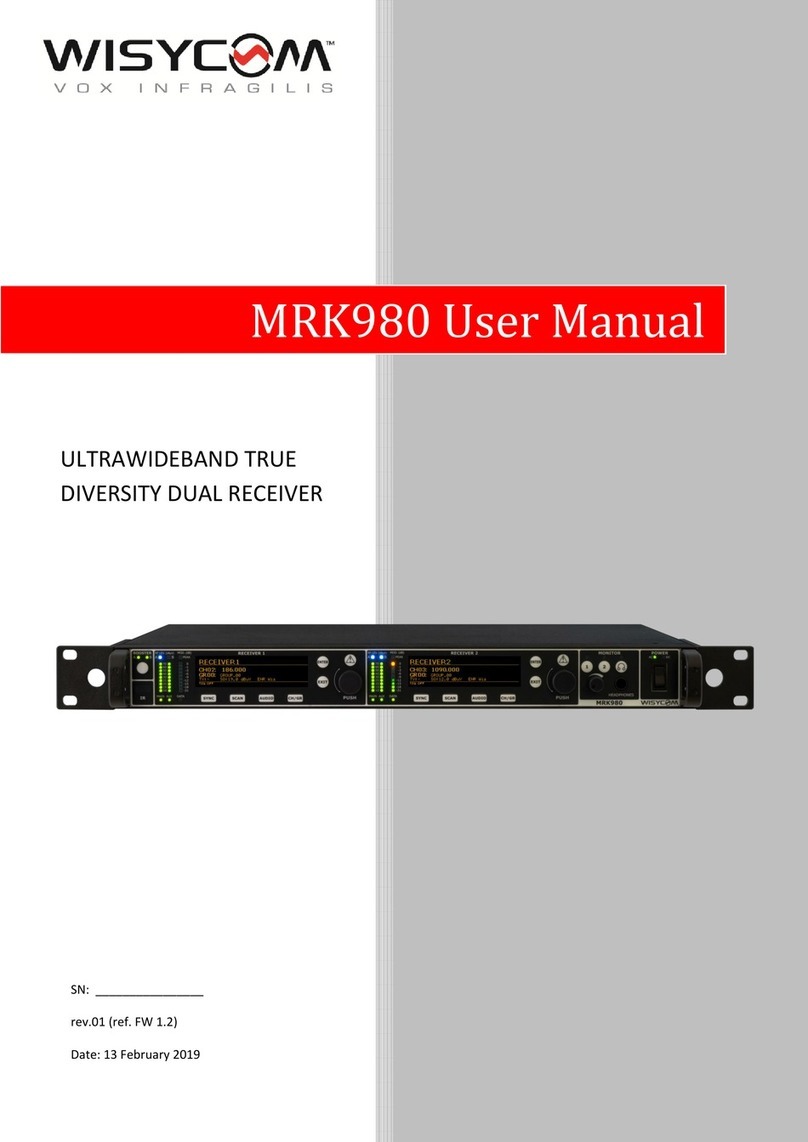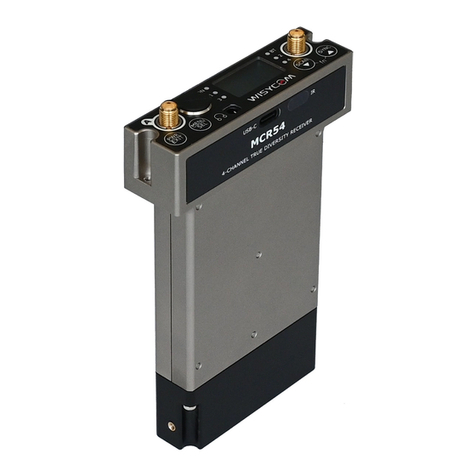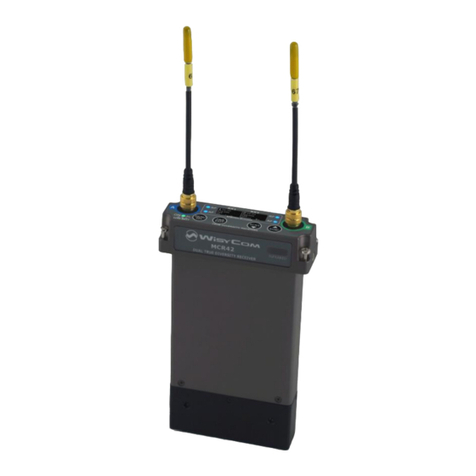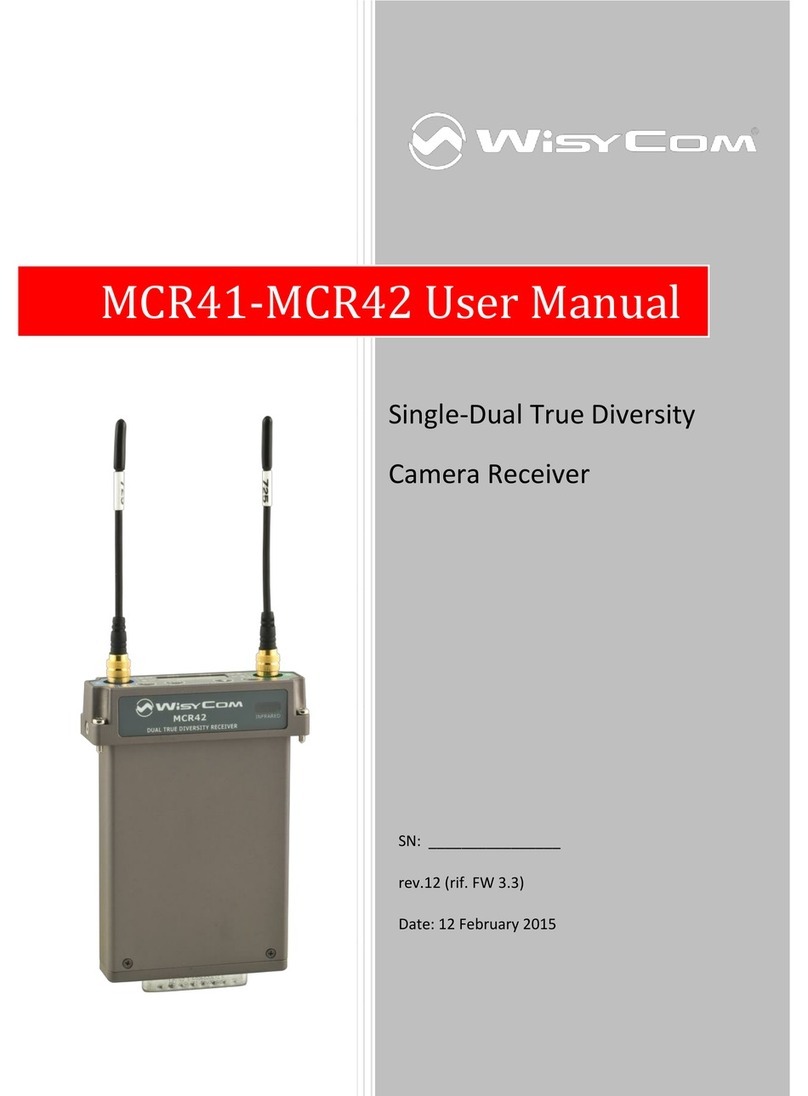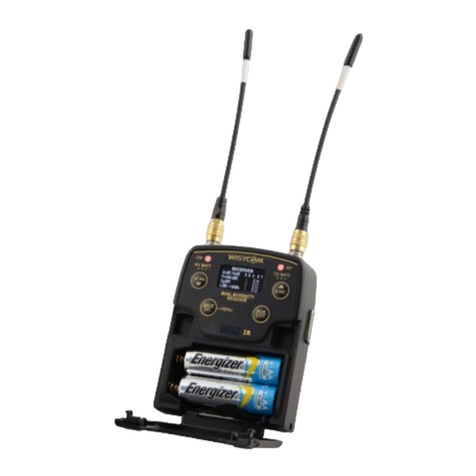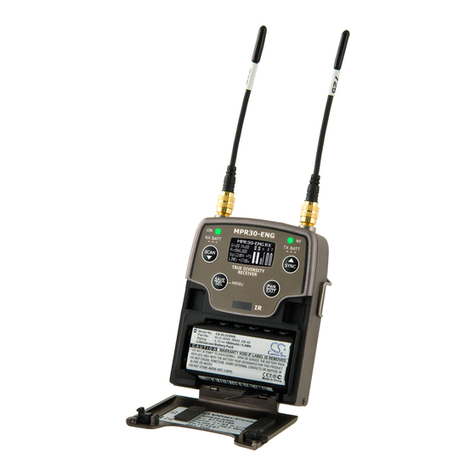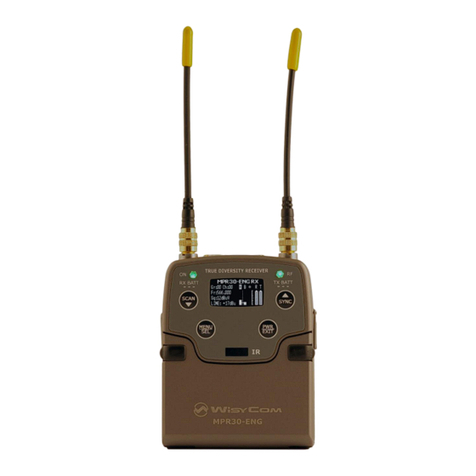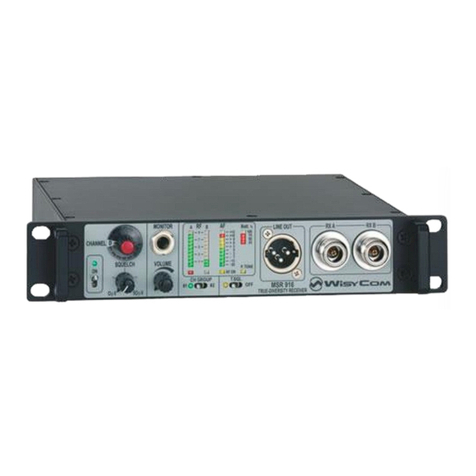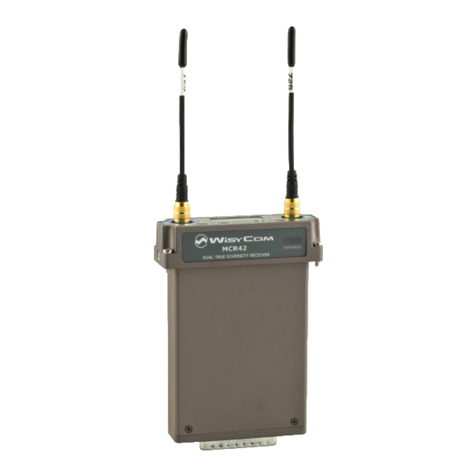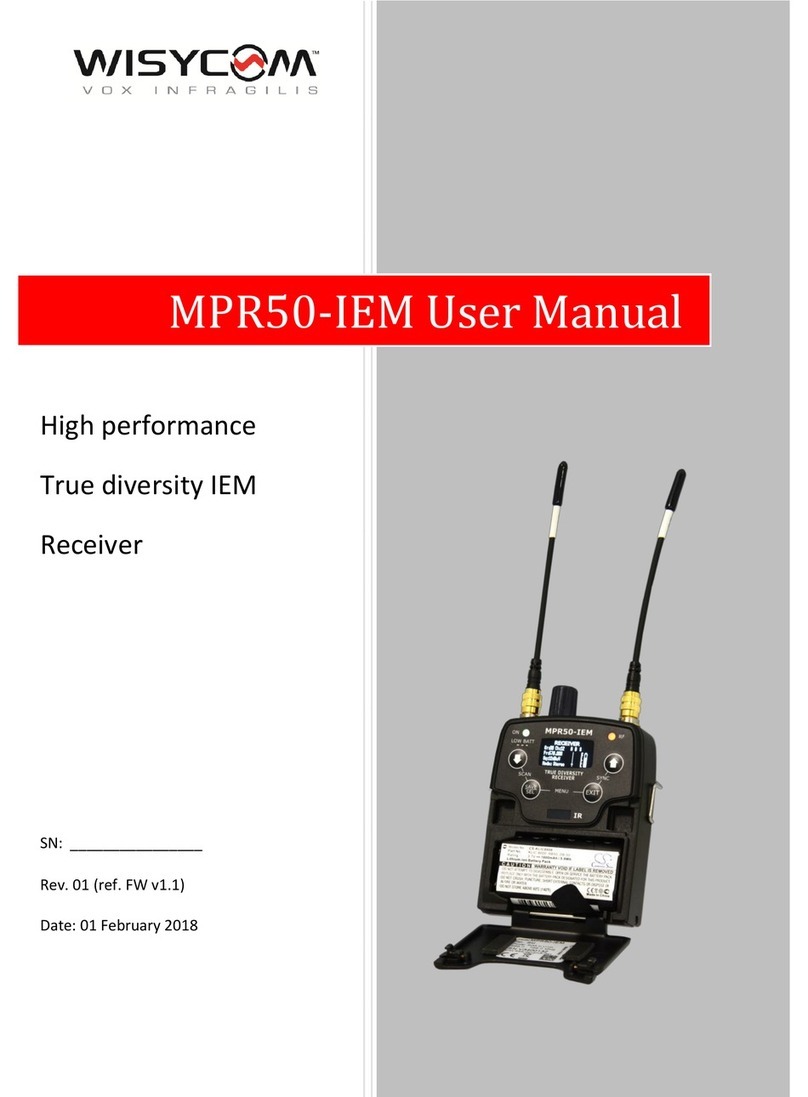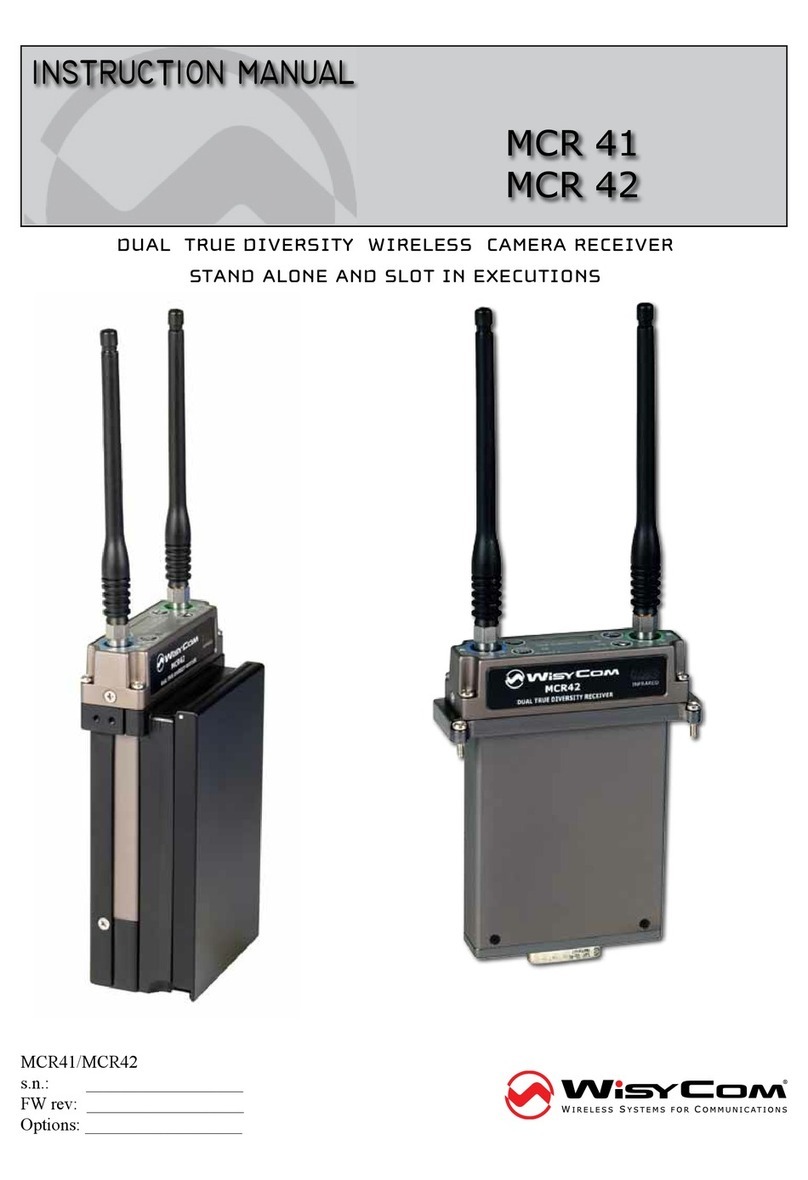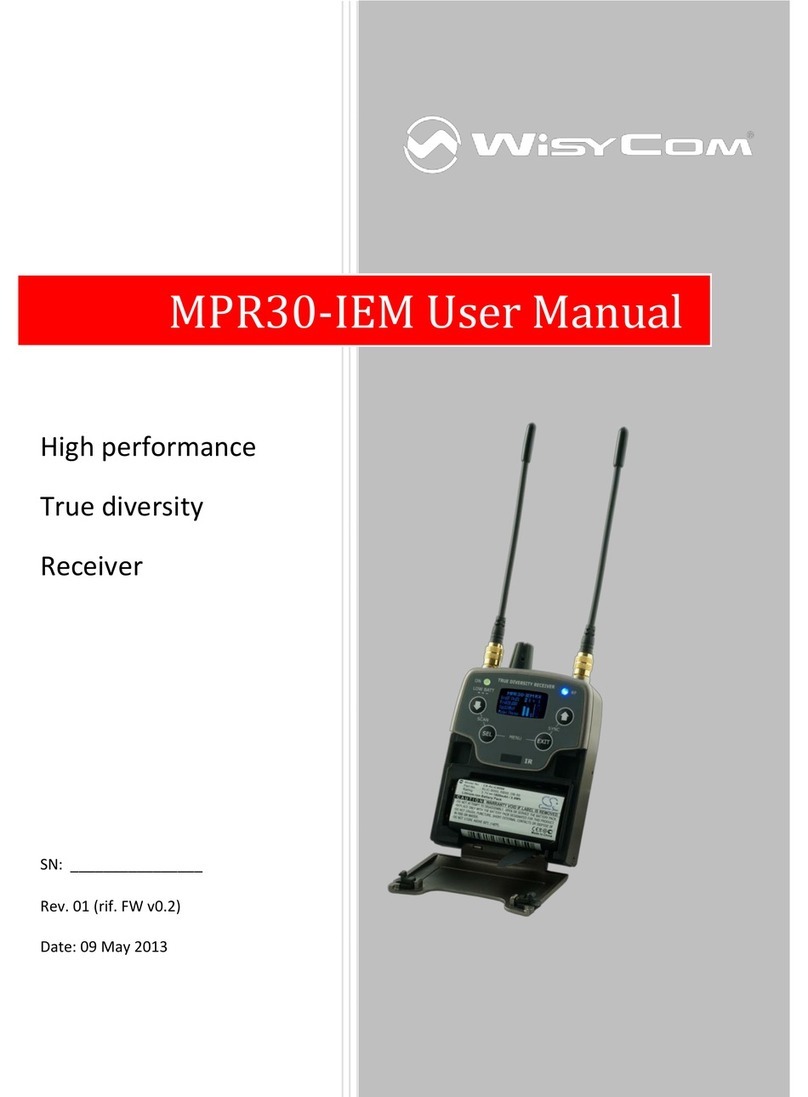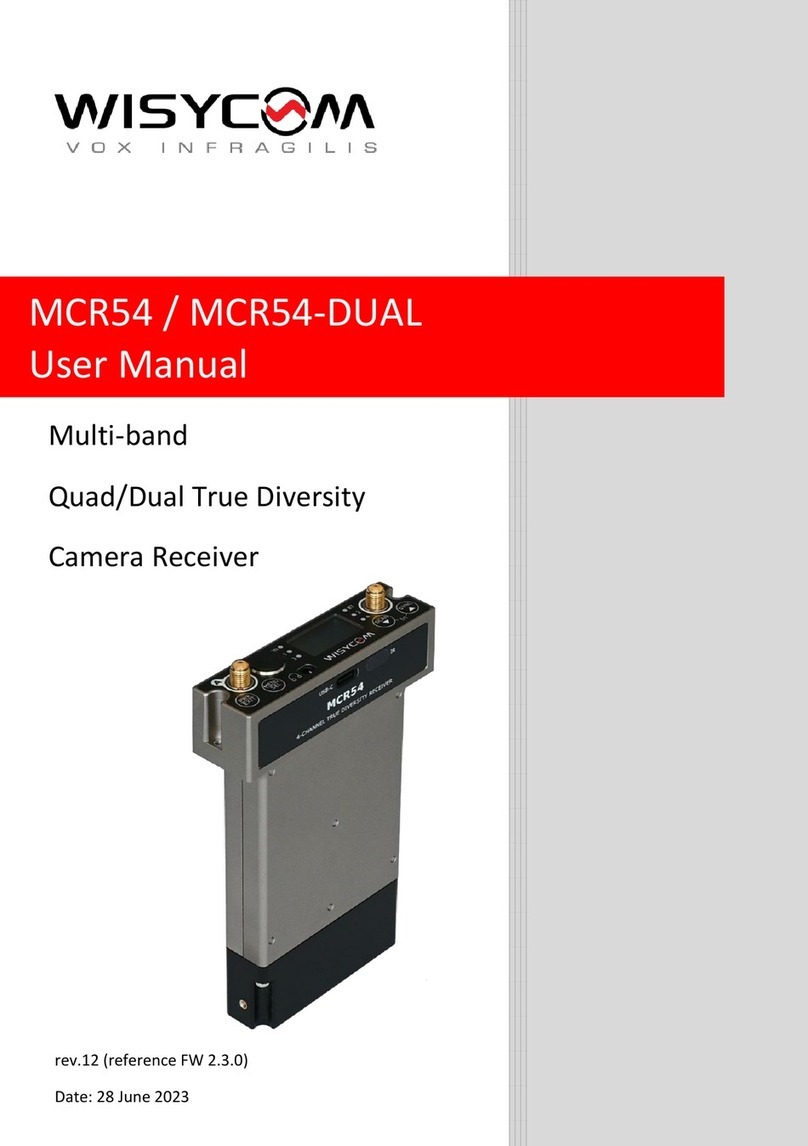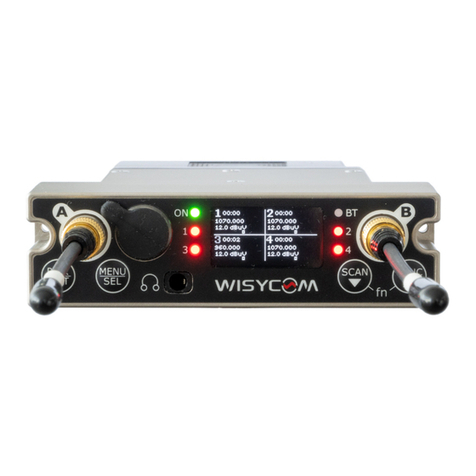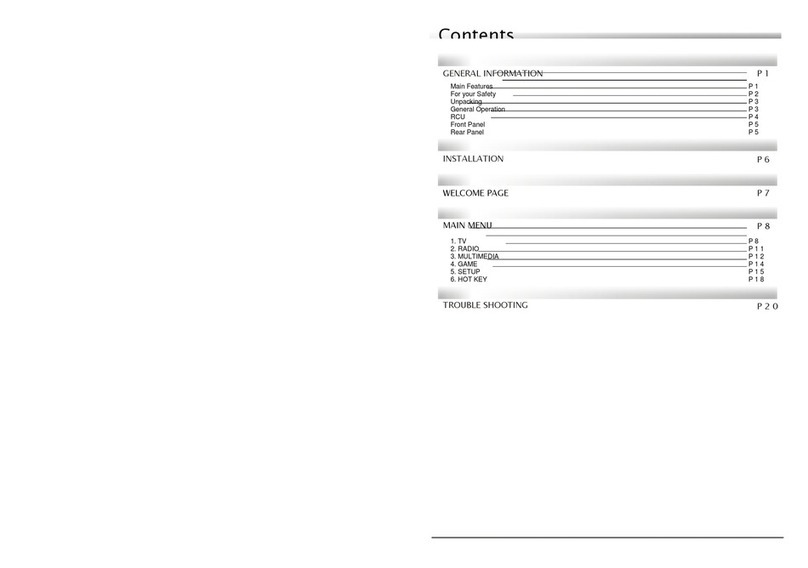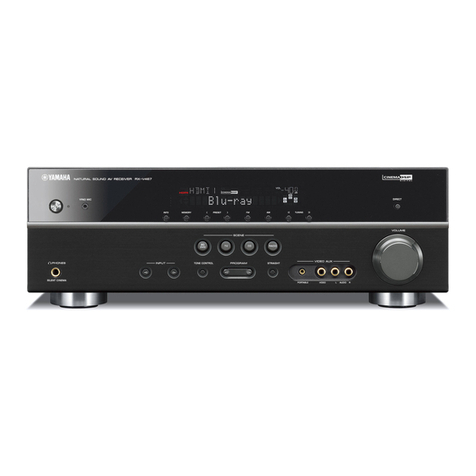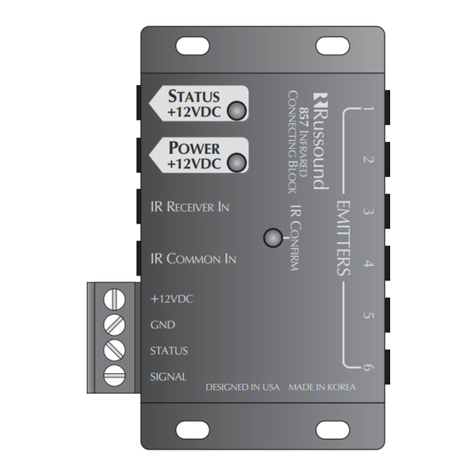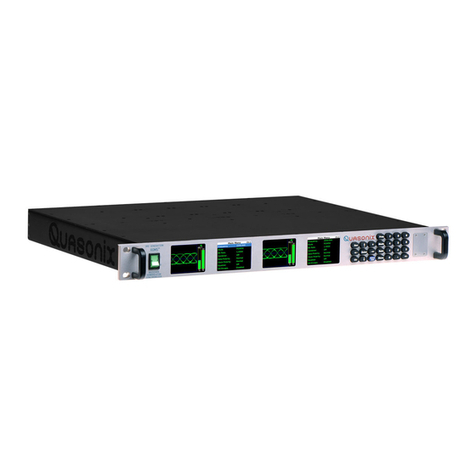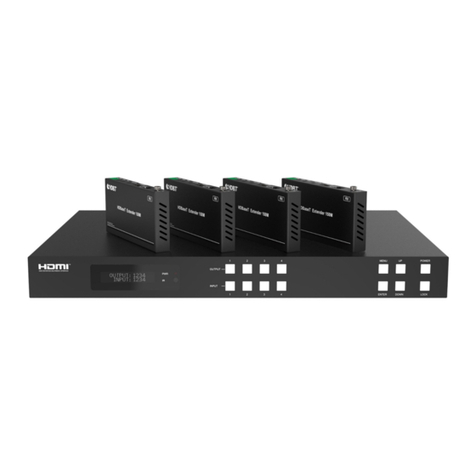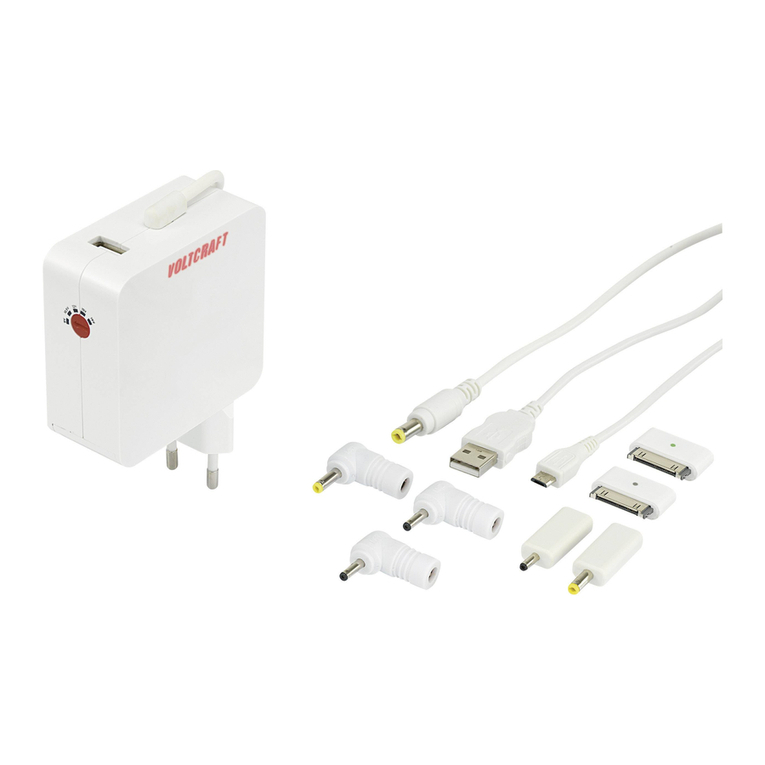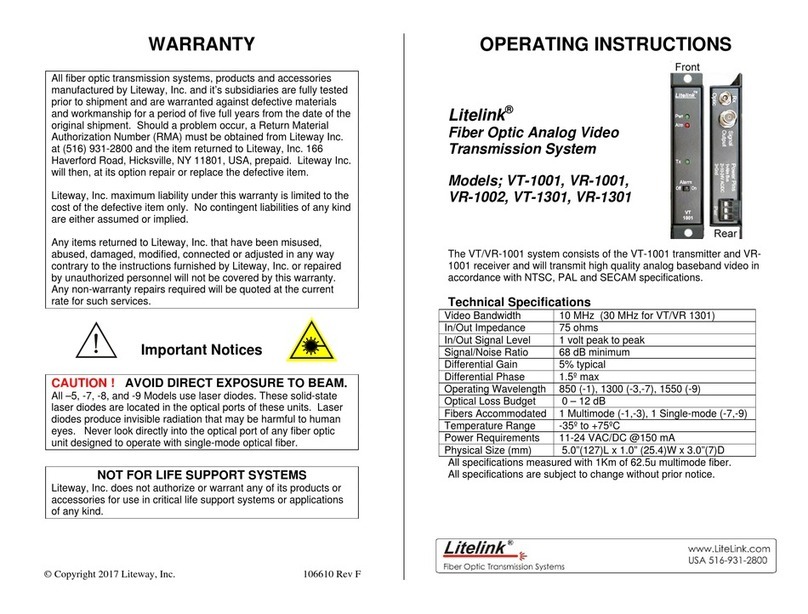
Pag. 3
MRK960 dual true diversity receiver
••WARNING: do not open the apparatus, RISK OF ELECTRIC SHOCK!
••Do not open the apparatus, only qualied service technician are enabled to operate on it. The apparatus
needs servicing when is not properly working or is damaged by liquids, moisture or other objects are fallen
in the apparatus.
••Use only accessories or replacement parts authorized or specied from the manufacturer.
••Do not supply more than 7 apparatus MRK960 from the mains output, see power requirements for other
apparatus.
••Clean the apparatus only with dry cloths, do not use liquids.
••The ON/OFF is a double pole circuit breaker, but to ensure the complete disconnecon of the apparatus,
disconnect the power cord.
••Report the serial number and the purchasing date in front of the manual, it is needed to have proper re-
placement parts or accessories from the manufacturer.
••When replacement parts are needed, use only replacement parts authorized from the manufacturer. Sub-
stuon with not authorized parts could result in electric shock, hazards or re.
»Keep attention on all the labels with warnings or hazards on the apparatus.
••WARNING: The apparatus is intended for professional use; anyway the manufacturer alerts the user that
the headphone output power of the apparatus could exceed the level of 85 dB(A) of sound pressure level
and this could be dangerous for the hearings. Do not use the headphone with high power level or for long
me. Reduce the power or suspend the hearing in the case of any kind of hearing problem.
Main features
MRK 960 is a modular wireless-microphone receiver System in a 19” 1 unit module, stackable, with dual true
diversity receivers:
••Extreme RF (radiofrequency) performances and reliability.
••Tuning windows of 240 MHz with tunables lters (2 ch’s independent): 470/840 MHz (TV ch 21/67)
with internal acve splier
••Wisycom digital expansion bus (DEXB) for future upgrade/enhancement thru simple slot-in card (pc-like).
DEXB can host DSP (40bit dsp processing) upgrade cards providing:
••digital output (i.e. AES3, Ethersound)
••mul-companding compability
••future digital funconality enhancements.
••Balanced electronic AF output (low impedance transformer-coupled oponal)
••2 USB’s connectors for conguraon/monitor and cascade rack connecons
••Automac scan for best channels, squelch and other automac setup
••Infrared interface (i.e. for system setup, microphone programming)
••Automac transmier re-programming (thru infrared, sync funcon)
